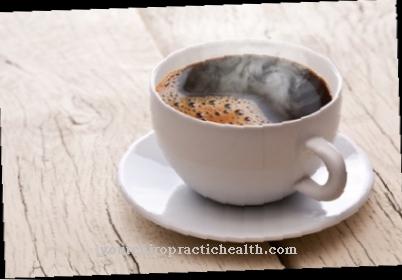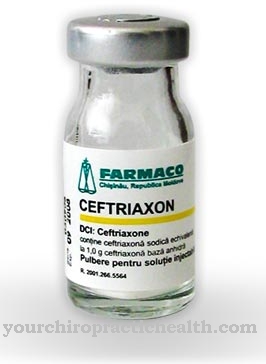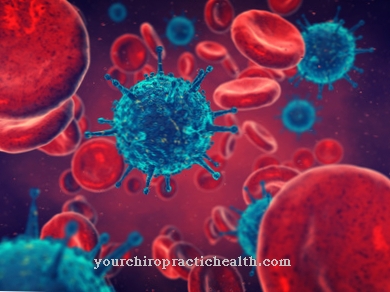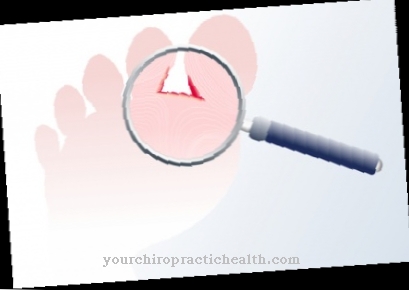quinine is a chemical compound found in the bark of the cinchona tree. Quinine is mainly used medically for the therapy of malaria, especially tropical malaria. In addition, it is sometimes used for the prophylaxis and therapy of muscle spasms and in preparations to relieve symptoms of flu-like infections. It is also used as a bitter substance in some foods.
What is quinine
Quinine is a natural substance found in the cinchona bark, the bark of the cinchona tree. Quinine is a chemical compound that is assigned to the group of quinoline alkaloids.
Quinine, which has the chemical molecular formula C20H24N2O2 has a white, very poorly water-soluble, crystalline powder and has a bitter taste. The melting point of quinine is 177 degrees Celsius, while that of quinine trihydrate is 57 degrees Celsius. The molar mass of quinine is 324.44 grams x mol ^ -1.
The lowest known toxic dose, i.e. H. the lowest dose that was demonstrably toxic to humans is 74 mg x kg ^ -1 after oral administration. The lowest demonstrably lethal dose in humans is 294 mg x kg ^ -1, the type of application in this case being unknown.
Quinine is used both as a medicinal substance and as a bitter substance in foods. Quinine has long been known to be used in the treatment of malaria.
Pharmacological effect
Quinine is usually administered orally. In an emergency, however, intravenous application is also possible. After oral administration, the quinine is absorbed relatively quickly and well. The maximum effect is reached after 1–3 hours. The plasma protein binding of quinine is about 70%. Almost all of the metabolism takes place in the liver; only 10% of the quinine is excreted unchanged.
The effect of quinine is based on an inhibition of the hemopolymerase of the plasmodia. The quinine prevents the formation of non-toxic β-hematin in the vacuoles of the plasmodia from toxic ferriprotophyrin IX. Plasmodia cause malaria. Several different plasmodia have to be distinguished here. However, quinine works against all of the Plasmodia species. Since the plasmodia require hemopolymerase, they are directly damaged by the quinine.
Quinine also has a local anesthetic and antipyretic effect even in small doses. Quinine sulfate also has an antispasmodic effect. The antispasmodic effect of quinine sulfate is due to an effect at the connection point between nerves and muscle fibers of the motor endplate.
Medical application & use
Quinine is mainly used to treat severe malaria tropica. Malaria tropica is the form of malaria caused by the pathogen Plasmodium falciparum. It is characterized by a relatively high concentration of the parasite in the blood (parasitemia).
In tropical malaria there is often severe anemia and neurological complications.In addition, tropica malaria can lead to a rhythmic fever. In addition, tropica malaria often leads to complications or changes in certain organs. This can also lead to kidney failure.
Quinine is indicated for malaria tropica. Quinine is mainly used when the pathogen is resistant or multi-resistant to chloroquine. Quinine is given in relatively high doses to treat malaria. The therapy is mostly carried out orally in the form of salts of quinine. The quantities of the salts usually correspond to 0.8 to 1 g quinine per day. For example, doses of 1.95 grams of quinine sulfate dihydrate are used daily, which roughly correspond to the stated concentration of quinine.
Significantly lower doses are used for all other quinine indications. Further indications are the prophylaxis and therapy of muscle cramps. The doses administered here are around 200 to 400 milligrams of quinine sulfate per day.
Outside of medicine, quinine is used in various foods because of its bitter taste. The "Bitter Lemon" and the "Tonic Water" are well-known beverages containing quinine.
Risks & side effects
When taking quinine, overdosing can cause quinine poisoning. If this occurs, typical symptoms occur. These include dizziness, vomiting, ringing in the ears, visual disturbances, spasms of the retinal vessels, damage to the optic nerve, mostly temporary blindness, states of excitement and cyanosis (bluish discoloration of the skin and mucous membranes).
In the worst case, it can result in cardiac death from cardiac paralysis or death from central respiratory paralysis. The lethal dose is around eight to ten grams. Activated charcoal (or sodium sulfate) and benzodiazepines (e.g. diazepam) are administered to treat quinine poisoning. The activated charcoal is supposed to absorb the quinine and thus inhibit the absorption of the quinine into the blood. The benzodiazepines are used to relax muscles.
Furthermore, there may be other side effects as part of quinine therapy. Nausea, vomiting (vomiting), diarrhea, abdominal pain, allergic symptoms, rash, asthma, thrombopenia, leukopenia, agranulocytosis, headache, dizziness and confusion may occur.
Double vision, reduced visual acuity (and other visual disturbances), tinnitus, hearing loss (and other hearing disturbances), drop in blood pressure, shock, and cardiac arrhythmias are possible adverse drug effects that can be caused by quinine.












.jpg)



.jpg)










.jpg)
